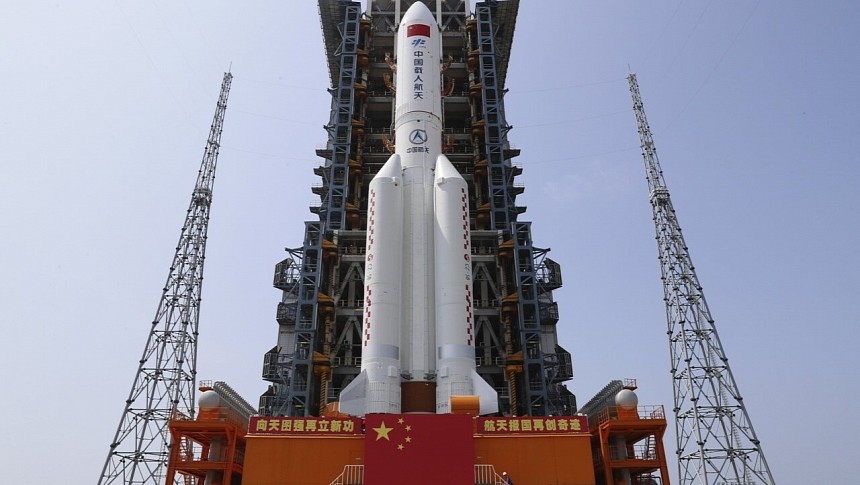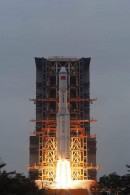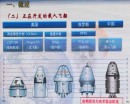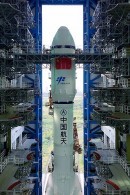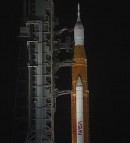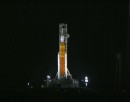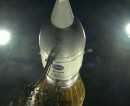In the first episode of season one of Apple TV's hit series For All Mankind, an alternate-reality America is forced to watch in abject horror as Alexei Leonov, a Soviet cosmonaut, plants a hammer and sickle flag down on the lunar surface, making it a truly "red" Moon. The Soviet Union may be long gone in our own reality, but make no mistake. Now that the second great space race is underway, a red moon could one day become something very real indeed.
Not by the hands of the ex-Soviets, but instead by the People's Republic of China. With the China National Space Administration's (CNSA's) human-crewed lunar exploration program now very much underway, it's essentially a two-horse race between the CNSA and NASA to determine which nation is the first to touch down on another heavenly body in over half a century. But don't get it twisted, NASA and their cohorts from the ESA, JAXA, and the rest of the nations signed on to the Artemis Accords are still undoubtedly ahead of the pack in terms of carrier rocket and spacecraft technology. But this is no guarantee of victory.
Though Artemis I, with its SLS booster rocket and fancy Lockheed Martin Orion crew capsule, operated pretty much flawlessly after scrubbing the launch three times from August to November of 2022, signs are already showing that progress might not remain consistent throughout the 2020s. In March 2023, NASA announced that the Artemis program's second mission, Artemis II, originally slated to launch in May of 2024, had been postponed a further six months to November of that year.
Citing unforeseen challenges in modifying the SLS rocket and its launch pad on top of other financial difficulties, it's entirely possible that Artemis II simply doesn't launch in 2024 whatsoever if even one more round of setbacks befalls the mission. In the interim, U.S. President Joe Biden and Vice President Kamala Harris have rallying support for a comprehensive budget increase for NASA and its affiliates for the 2024 fiscal year. Under these plans, NASA's federal endowment would increase to $27.2 billion for next year, a roughly seven percent increase over 2023.
Under these provisions, this budgetary package would include an allotment of $8.1 billion strictly dedicated to the Artemis program. Of course, such a budgetary increase would need its particulars worked over by both houses of Congress before its approval. Meaning, ultimately, it's anybody's guess what the final numbers for next year's NASA budget will look like. In the meantime, the CNSA is watching, biding their time as they themselves construct their own lunar exploration hardware.
But unlike NASA, whose budget is beholden to the whims of politicians operating strictly down party lines, China's single-party state dictatorship ensures the space-exploration ambitions of Xi Jinping and his inner circle are followed without question. Though an absolute nightmare in terms of human rights violations, this ability to expedite vital decisions regarding the Chinese human-crewed lunar program is awfully concerning for Western space agencies fearful of being overtaken in the space race.
The CNSA's Long March 9 super-heavy booster rocket is already well under development with the intention of carrying enough payload into trans-lunar injection to facilitate a Chinese human-crewed lunar landing. With an estimated takeoff thrust level of 60 MN (13,000,000 lbs), only SpaceX's Starship launch systems even come close to reaching this figure. All the while, a novel Chinese adaptation of a Lunar Excursion Module (LEM) with a unique two-stage design intended to partition fuel for the descent as well as ascent phase at least appears to be a more practical solution than a massive SpaceX Starship HLS.
Of course, a bunch of static mockups at a Chinese air and space convention are, well, just that. But what if this hardware manages to leap out of the mockup phase before NASA and the ESA are ready to put human beings on the surface of the Moon again? If NASA continues to run into financial turmoil stemming from Congress being unable, or more appropriately, unwilling to allocate the proper funds to stay ahead of the curve, will we really see a Chinese red moon in our lifetime?
Well, don't despair. Why? Because let's remember what happened in For All Mankind when the Soviets reached the Moon first. NASA personnel and their government financiers became well and truly ticked off and wanted to avenge their loss in the first stage of the space race by kicking the Soviet's butts going forward. By the end of season 3, NASA maintained a permanent presence at the lunar south pole, operated nuclear-powered space shuttles with ease, and managed to land human beings on Mars by the year 1996.
Of course, this was all just a television show. But if the Chinese Communist party manages to land humans on the Moon before NASA and the ESA, do you really think the U.S. Government is going to roll over and accept defeat? There's not a chance in the world that happens. In the event that the red Moon comes to pass, chances are very good that, like on Apple TV, Congress finally loosens the reigns on NASA and gives them the monetary support to do things in space that would have once been nothing short of science fiction.
With that in mind, if sometime in the late 2020s, you log onto Twitter or YouTube and find the Chinese planting their flag on the lunar surface before the Americans, we encourage you not to despair. Why? Because it means NASA, the ESA, and all its international partners are about to receive the all-clear to take the gloves off. This time, they'll have the financial support to make it happen. When that day comes, it might just be the day humanity goes down the path of creating For all Mankind in our own reality. Except this time, the story that unfolds might be even more spectacular than what some Apple TV writer is able to come up with.
But what do you think? Does China have hope in heck of beating NASA to the Moon? Or are we giving a bunch of plastic mockups on display at a Chinese science convention entirely too much credit? Let us know in the comments down below.
Though Artemis I, with its SLS booster rocket and fancy Lockheed Martin Orion crew capsule, operated pretty much flawlessly after scrubbing the launch three times from August to November of 2022, signs are already showing that progress might not remain consistent throughout the 2020s. In March 2023, NASA announced that the Artemis program's second mission, Artemis II, originally slated to launch in May of 2024, had been postponed a further six months to November of that year.
Citing unforeseen challenges in modifying the SLS rocket and its launch pad on top of other financial difficulties, it's entirely possible that Artemis II simply doesn't launch in 2024 whatsoever if even one more round of setbacks befalls the mission. In the interim, U.S. President Joe Biden and Vice President Kamala Harris have rallying support for a comprehensive budget increase for NASA and its affiliates for the 2024 fiscal year. Under these plans, NASA's federal endowment would increase to $27.2 billion for next year, a roughly seven percent increase over 2023.
Under these provisions, this budgetary package would include an allotment of $8.1 billion strictly dedicated to the Artemis program. Of course, such a budgetary increase would need its particulars worked over by both houses of Congress before its approval. Meaning, ultimately, it's anybody's guess what the final numbers for next year's NASA budget will look like. In the meantime, the CNSA is watching, biding their time as they themselves construct their own lunar exploration hardware.
The CNSA's Long March 9 super-heavy booster rocket is already well under development with the intention of carrying enough payload into trans-lunar injection to facilitate a Chinese human-crewed lunar landing. With an estimated takeoff thrust level of 60 MN (13,000,000 lbs), only SpaceX's Starship launch systems even come close to reaching this figure. All the while, a novel Chinese adaptation of a Lunar Excursion Module (LEM) with a unique two-stage design intended to partition fuel for the descent as well as ascent phase at least appears to be a more practical solution than a massive SpaceX Starship HLS.
Of course, a bunch of static mockups at a Chinese air and space convention are, well, just that. But what if this hardware manages to leap out of the mockup phase before NASA and the ESA are ready to put human beings on the surface of the Moon again? If NASA continues to run into financial turmoil stemming from Congress being unable, or more appropriately, unwilling to allocate the proper funds to stay ahead of the curve, will we really see a Chinese red moon in our lifetime?
Well, don't despair. Why? Because let's remember what happened in For All Mankind when the Soviets reached the Moon first. NASA personnel and their government financiers became well and truly ticked off and wanted to avenge their loss in the first stage of the space race by kicking the Soviet's butts going forward. By the end of season 3, NASA maintained a permanent presence at the lunar south pole, operated nuclear-powered space shuttles with ease, and managed to land human beings on Mars by the year 1996.
With that in mind, if sometime in the late 2020s, you log onto Twitter or YouTube and find the Chinese planting their flag on the lunar surface before the Americans, we encourage you not to despair. Why? Because it means NASA, the ESA, and all its international partners are about to receive the all-clear to take the gloves off. This time, they'll have the financial support to make it happen. When that day comes, it might just be the day humanity goes down the path of creating For all Mankind in our own reality. Except this time, the story that unfolds might be even more spectacular than what some Apple TV writer is able to come up with.
But what do you think? Does China have hope in heck of beating NASA to the Moon? Or are we giving a bunch of plastic mockups on display at a Chinese science convention entirely too much credit? Let us know in the comments down below.
